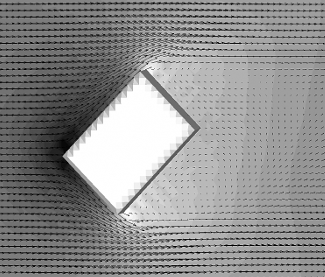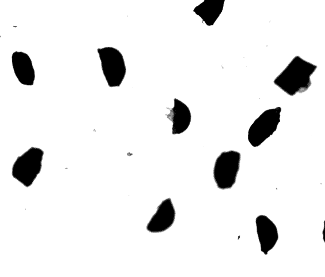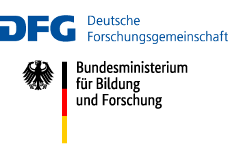Wall collisions of non-spherical particles
Grant number
-
Project title
Transport of non-spherical particles in turbulent internal flows
Projekt leader
Prof. Dr.-Ing. habil. Martin Sommerfeld
Realized by
Keywords
Turbulente Flow, Wall collision, none-spherical particles, Lattice-Boltzmann method, modelling
Short description of the Project
The numerical simulation of particle-laden flows is almost exclusively based upon the assumption of spherical particles. Thus the forces (e.g. drag and transversal lift) are calculated based on known coefficients. However in practical applications mostly non spherical particles are present, whose behavior is vastly different from spherical particles. For those particles the flow coefficients are usually unknown, especially for higher particle-Reynolds numbers. Within the scope of this project the Euler/Lagrange method shall be extended to handle particle laden gas flows with non-spherical particles. In order to achieve this, two modelling approaches are used. For irregularly shaped particles statistical methods are used to determine the flow coefficients from corresponding distribution functions. Wall collisions are handled in a similar way, whereas the coefficient of restitution and coefficient of friction are determined from distribution functions. For regularly shaped particles additionally the particles orientation in the flow is calculated. Thereby it is necessary to consider the flow coefficients dependency on orientation. Because the particles orientation upon collision with the wall is known, the collision can be simulated directly by solving the momentum equations in association with the Coulomb model. The required parameters like the coefficient of restitution and coefficient of friction, respectively their distribution, are determined by detailed experiments. The missing flow coefficients for irregularly shaped as well as regularly shaped particles are determined from direct numerical simulation using the Lattice-Boltzmann method. For irregularly shaped particles the flow coefficients are deduced from the results for different orientations, which are then use for Lagrange calculations. For regularly shaped non-spherical particles the coefficients are calculated dependent on orientation and corresponding correlations are derived with respect to orientation.
 |
 |
| Photo 1: Wall collision of a particle | Photo 2: Wall collision of several particles |
